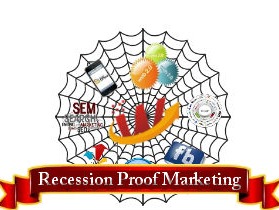
The Autoplay Dilemma: Why Control Matters
YouTube has practically become synonymous with video content, offering an immense range of material that caters to diverse interests. However, the platform's features, including Autoplay, can sometimes seem more like a hindrance than a help. Autoplay automatically queues another video after the current one finishes, keeping viewers glued to their screens for longer. While some users appreciate this feature for its convenience, many find it can disrupt their viewing experience. Understanding how to turn off Autoplay on YouTube can reclaim a viewer's control and enhance their enjoyment.
What is YouTube Autoplay?
At its core, Autoplay is designed to enhance engagement by suggesting related videos after one finishes. It can be beneficial for binge-watching sessions, particularly for series or playlists. However, many users experience frustration when autoplay plays a video unrelated to their interests, derailing their planned viewing. User feedback highlights that unwanted content can diminish the satisfaction of discovering quality videos. This is particularly relevant for small business owners leveraging YouTube to connect with customers; maintaining audience engagement with relevant content is crucial.
How to Turn Off Autoplay: Step-by-Step
Disabling the Autoplay feature on YouTube is essential for a refined viewing experience. Here's how to accomplish it on various devices:
On Desktop:
- Open YouTube in your preferred browser and select a video to play.
- Locate the Autoplay toggle on the right-hand side of the video player.
- Click the toggle to turn it off, effectively stopping the stream of unsolicited video suggestions.
On Mobile:
- Launch the YouTube app on your smartphone.
- While watching a video, find the Autoplay switch at the top of the player.
- Tap the switch to turn it off.
On Smart TV:
- Open the YouTube app and navigate to Settings.
- Scroll down to find the Autoplay option.
- Toggle it off.
Through Account Settings:
- Access Settings by clicking your profile picture on the app or website.
- Locate the Autoplay menu and switch it off for a consistent experience across devices.
The Positive Impact of Disabling Autoplay
Turning off Autoplay offers several significant benefits:
- Enhanced Control: You decide what you watch next without defaulting to related content.
- Data Preservation: For mobile users, this feature can save data charges that would otherwise accrue through continuous streaming.
- Increased Focus: By limiting distractions, you have the freedom to engage with content meaningfully.
- Better Content Quality: With the ability to choose videos mindfully, viewers are more likely to find content that resonates with their interests.
Parental Considerations and Content Safety
For those watching with children, turning off autoplay can be a practical way to enhance child safety on YouTube. It prevents unintended exposure to inappropriate or unrelated content that might pop up in the autoplay feed. By controlling what children access, parents foster a more secure viewing environment. Employing YouTube's parental controls, such as restricting unwanted content, complements the benefits of disabling autoplay.
How Does This Affect Small Business Owners?
For small business owners utilizing YouTube to reach audiences, manipulating features like Autoplay can impact engagement metrics. By disabling Autoplay, business owners can direct viewers intentionally to particular content that promotes products or services rather than losing them to unrelated videos. Furthermore, employing a focus strategy can lead to improved visibility and higher engagement, whether through organic reach or through purchased subscribers. These strategic moves ensure that content resonates with a targeted audience and maximizes conversion potential.
Conclusion: Take Charge of Your Viewing Experience
Understanding how to turn off the Autoplay feature equips viewers with the control necessary for an enriched video experience. It promotes a more attentive immersion with content, saving data and enhancing focus, particularly beneficial for small business owners eager to grow their audience. Take these steps today to reclaim your viewing experience on YouTube and ensure it aligns with your preferences!
Remember, each action you take to control your viewing preferences can lead to a more satisfying and productive use of your time on this powerful platform.
 Add Row
Add Row  Add
Add 




Write A Comment